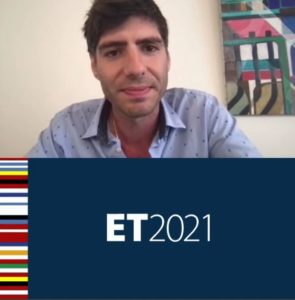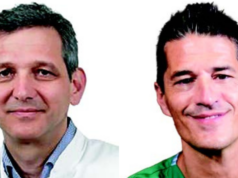
Using selective internal radiation therapy (SIRT) to down-stage hepatocellular carcinoma (HCC) tumours or act as a bridge to surgery is feasible for both small and large growths, regardless of whether or not the patient has undergone portal vein thrombosis. This is the conclusion presented by Lambros Tselikas (Gustave Roussy Cancer Campus, Paris, France) at the European Conference on Embolotherapy (ET; 17–19 June, online).
In his virtual presentation, Tselikas emphasised the importance of dosimetry optimisation, which he said is crucial “to increase the response, to get a high complete response rate, and to increase the FLR [future liver remnant]. Time of surgery [following SIRT] is probably between three months and one year,” he concluded.
When thinking about the reasons why the decision might be made to use radioembolization as a bridge to surgery, Tselikas said simply: “Because we can”.
He cited a review series published in Frontiers in Oncology in 2014 from Arthur J A T Braat (University Medical Center Utrecht, Utrecht, The Netherlands) and colleagues that showed that, depending on the population, it is possible to bridge patients to transplantation. Tselikas also noted that, depending on the selection criteria applied, the percentage of patients that can be staged down varied hugely, from 25–100% of patients, depending on the liver function and the tumour size.
“What is interesting,” the ET speaker continued, “is the relationship between the pathological response you find in the imaging and in the histopathology. These are not very well correlated in some studies. The important message is, depending on the size, when you have complete necrosis on imaging, you will find complete necrosis on pathology.”
Writing in 2014, Braat et al explain the rationale for using radioembolization to downstage tumours: “Inducing significant tumour reduction can downstage patients for resection or, through attaining stable disease, patients can stay on the liver transplantation waiting list. Hereby, radioembolization could make a difference between curative of palliative intent in oncologic patient management. Prior to surgery, the future remnant liver volume might be inadequate in some patients. In these patients, forming an adequate liver reserve through radioembolization leads to prolonged survival without risking post-operative liver failure and minimising tumour progression while inducing hypertrophy. In order to optimise results, developments in procedures surrounding radioembolization are equally important. Predicting the remaining liver function after radical treatment and finding the right balance between maximum tumour irradiation and minimising the chance of inducing radiation-related complications are still challenges.”
Tselikas also presented the positive results of the DOSISPHERE-1 trial, which reported improvement in tumour response rate and overall survival in patients who had HCC treated with Yttrium-90 (Y-90) radioembolization utilising personalised dosimetry. Patients in the DOSISPHERE-1 trial were either given personalised or standard radioembolization; in the personalised group, 35% (10 of 28 patients) went on to have surgery with curative intent, whilst only 4% (one of 28 patients) went on to have surgery with curative intent following standard dose radioembolization.
He also shared the results of the LEGACY (Local radioembolization using glass microspheres for the assessment of tumour control with Y-90) study—a multicentre, single-arm, retrospective study conducted at three sites that included all eligible, consecutive patients with HCC treated with radioembolization between 2014 and 2017. The study aimed to evaluate objective response rate and duration of response. Clinical meaningful response rates and prolonged duration of response were observed in the treatment of unresectable, solitary HCC ≤8cm.













